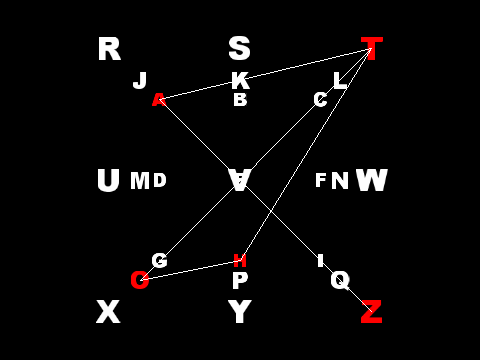Sigil CC-BY-SA by bwigfield.
In chaos magick, sigils are visual embodiments of intent used to focus and actualize that intent. Within both supernatural and cognitive theories of magic the principle is the same: sigils are foci for attracting the resources (supernatural or mental) required to achieve the desire of the person who has constructed them.
Traditional sigils are drawings, two dimensional graphical forms, created using magic square or letter abstraction techniques. Contemporary mages have constructed hypermedia sigils in various formats, from comic book series to interactive multimedia installations.
Sigils created by creative computer graphics programming software can be printed cheaply using Open Source 3D printers or online 3D printing services. This opens up a new range of techniques for creating and using sigils.
Image copyright 2011 Marius Watz
The 3D printed art of Marius Watz shows how data can be modelled in aesthetically appealing three dimensional form, and how the challenges of modelling complex arbitrary data can be met while still creating easily printed models. RIG’s experiments in 3D printed models of user data by distorting pre-existing forms Chernoff Face-style to display a as christmas tree decorations. We Can use these approaches and more (such as model mash-ups and extrusion of 2D sigils) to embody the intent of sigils rather than Web 2.0 data or random numbers in 3D printed form.
Image Copyright Joshua Madara 2011.
Joshua Madara’s 3D graphics sigil creator Processing sketch demonstrates the creation of a virtual three dimensional sigil form. The sigil is line-based, to keep its genetic link to magic square-based sigils, and would not be 3D printable in this form. But the lines could be replaced with cylinders or rectangular beams, with the angles of joins between them limited to ensure that they can be printed without support on Open Source 3D printers.
Image copyright 2011 Marius Watz
Whether Watz’s organic or machinic forms, more object based approaches or something even more abstract, it is easy to see how this can be applied to the construction of sigils. The mapping of letters (or words) to formal properties or objects by software in order to encode them in forms is how 3D printed sigil models can be produced. This adds an extra dimension of reality and relationality between the virtual and the real that affords a corresponding increase in persuasiveness and richness for sigils.
Part of the efficacy of a sigil may come from the mindfulness and concentration involved in manually constructing and chargeing it. If this is the case then having a machine construct the sigil may work against the sigil’s effectiveness. Constructing the code to make the sigil, and watching the mechanical operation of Open Source 3D printers alleviate this. And a better sigil form than could be made by hand will be a better focus, whether produced by magickal or technological means.
Create 3D sigils using creative coding software such as Processing, or in 3D design software such as Blender. Make the software and model files Free Software and Free Culture (GPL the software, BY-SA the models, wherever you can) and empower others to follow in your footsteps. Upload the model to a filesharing site such as Thingiverse. Then print it using an Open Source 3D printer such as a Lulzbot or a 3D printing service such as Shapeways.
A 3D printed sigil can be used as a focus for contemplation, mediation or ritual. It can be placed in work or living space as a reminder and proof of the reality of the objective embodied in the sigil. Or it can be destroyed to release it into the imagination and the world as part of a ritual by burning or by melting using solvents (but beware toxic fumes). Uploading the sigil to a model filesharing site will spread it further into the world as both virtual and, if anyone prints it, as physical form.



